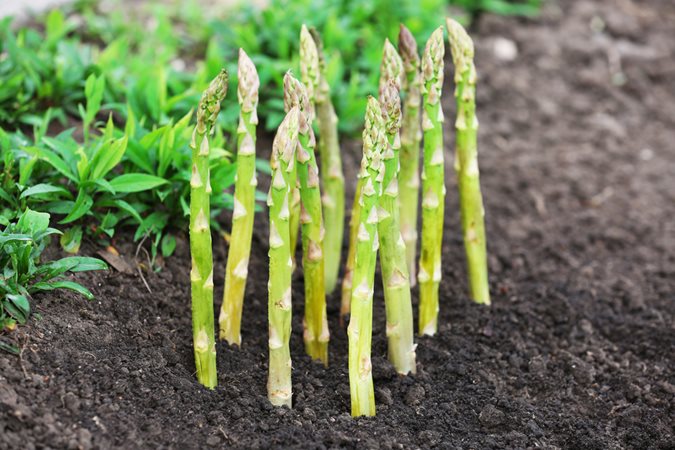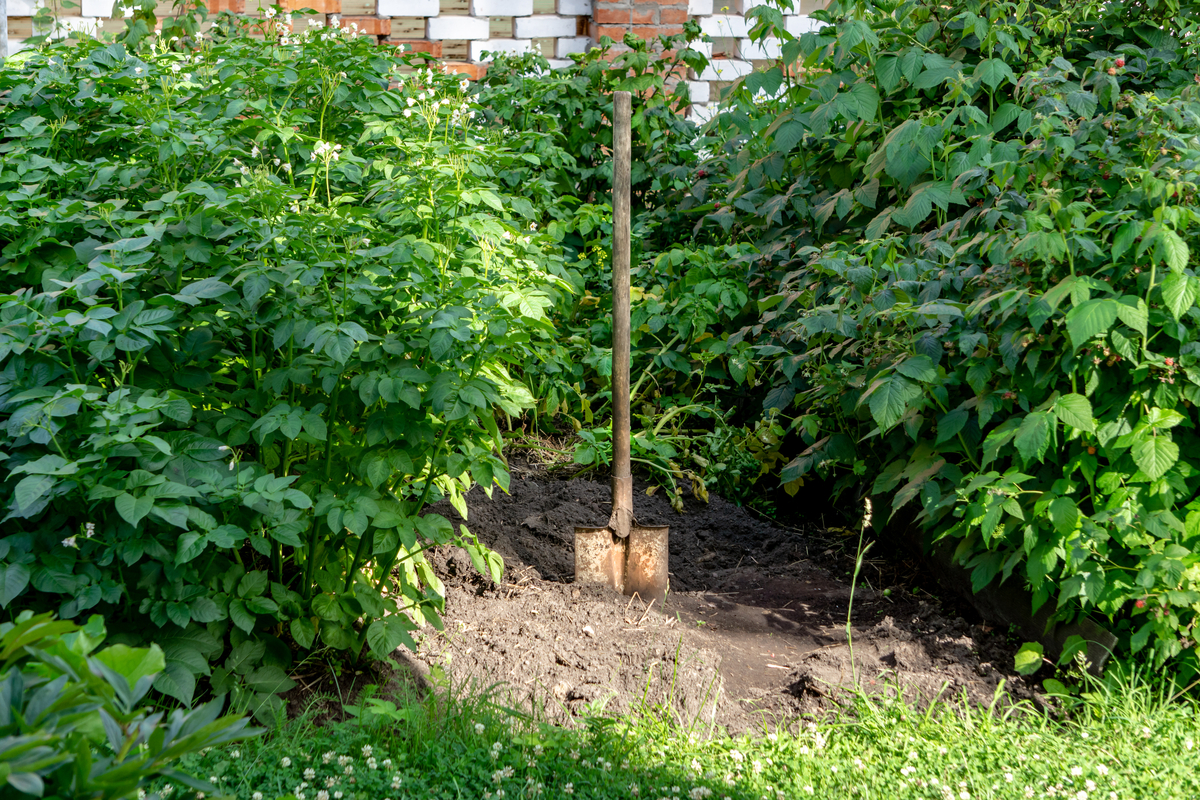Asparagus And Raspberries: The Perfect Companion Planting
Asparagus and Raspberries: The Perfect Companion Planting
Asparagus and raspberries are two delicious and nutritious crops that can be grown together in the garden. They have a number of complementary qualities that make them ideal companion plants.
Asparagus is a perennial vegetable that takes several years to mature and produce spears. It prefers full sun and well-drained soil. Asparagus is a heavy feeder, so it benefits from being planted with nitrogen-fixing plants.
Raspberries are also perennials, but they can be grown as annuals in colder climates. They prefer full sun and moist, well-drained soil. Raspberries are susceptible to a number of pests and diseases, so they benefit from being planted with companion plants that repel pests and attract beneficial insects.
When planted together, asparagus and raspberries can help each other in a number of ways.
- Asparagus helps to improve the soil. Asparagus roots release a chemical called asparagine, which helps to break down organic matter in the soil. This makes the soil more nutrient-rich and easier for raspberries to grow in.
- Raspberries help to deter pests. The strong scent of raspberry leaves repels a number of pests, including asparagus beetles, aphids, and spider mites. This can help to protect asparagus plants from damage.
- Raspberries attract beneficial insects. The flowers of raspberry plants attract a number of beneficial insects, such as ladybugs, hoverflies, and parasitic wasps. These insects help to control pests that can damage asparagus plants.
In addition to these benefits, asparagus and raspberries can also be aesthetically pleasing when planted together. The tall, upright spears of asparagus provide a nice contrast to the spreading growth of raspberry bushes. The flowers of both plants are also attractive, and they can add a splash of color to the garden.
If you are looking for two companion plants that can help each other thrive, asparagus and raspberries are a great option. They are both relatively easy to grow, and they can provide you with delicious and nutritious food for many years to come.
Here are some specific companion planting tips for asparagus and raspberries:
- Plant asparagus in full sun and well-drained soil. Add compost or manure to the soil before planting to improve its fertility.
- Space asparagus plants 2-3 feet apart.
- Plant raspberries in full sun and moist, well-drained soil. Add compost or manure to the soil before planting to improve its fertility.
- Space raspberry plants 3-4 feet apart.
- Mulch around both asparagus and raspberry plants to help retain moisture and suppress weeds.
- Fertilize asparagus plants in the spring with a balanced fertilizer.
- Fertilize raspberry plants in the spring and summer with a high-potassium fertilizer.
- Water asparagus plants regularly, especially during hot, dry weather.
- Water raspberry plants regularly, especially during the first year of growth.
- Protect asparagus plants from asparagus beetles by planting marigolds or nasturtiums nearby.
- Protect raspberry plants from aphids, spider mites, and other pests by planting basil, chives, or dill nearby.
With proper care, asparagus and raspberries can be a rewarding addition to any garden. They are both delicious and nutritious crops that can provide you with food for many years to come.
Asparagus and raspberries are two delicious and versatile fruits that can be grown together in the same garden. In fact, companion planting these two crops can actually benefit both of them. Asparagus is a nitrogen-fixing plant, which means that it adds nitrogen to the soil. This can help raspberries to grow better and produce more fruit. Raspberries, on the other hand, attract pollinators, which can help asparagus to set seed.
If you are interested in companion planting asparagus and raspberries, there are a few things you need to keep in mind. First, asparagus needs full sun, while raspberries can tolerate some shade. Second, asparagus needs well-drained soil, while raspberries prefer slightly acidic soil. Third, asparagus should be planted at least three feet away from raspberries, as they can both spread quite wide.
For more information about asparagus and raspberries companion planting, I recommend visiting Gardenia Inspiration. This website has a wealth of information on companion planting, including specific planting instructions for asparagus and raspberries. You can also find tips on how to attract pollinators to your garden and how to improve the health of your soil.
FAQ of asparagus and raspberries companion planting
- Can asparagus and raspberries be planted together?
Yes, asparagus and raspberries can be planted together. In fact, they are considered to be beneficial companion plants. Asparagus helps to suppress weeds and pests, while raspberries provide nitrogen to the soil, which asparagus needs to thrive.
- How far apart should asparagus and raspberries be planted?
Asparagus should be planted 12-18 inches apart, while raspberries should be planted 3-4 feet apart. This will give each plant enough space to grow and spread.
- What are some other good companion plants for asparagus and raspberries?
Some other good companion plants for asparagus and raspberries include beans, carrots, chives, garlic, onions, peas, spinach, and tomatoes. These plants help to deter pests and diseases, and they also improve the soil quality.
- What are some tips for companion planting asparagus and raspberries?
When companion planting asparagus and raspberries, it is important to consider the size and growth habits of each plant. Asparagus is a tall, upright plant, while raspberries can spread out and become quite bushy. To avoid overcrowding, it is important to plant them in the right location and give them enough space to grow.
- What are some common problems that can occur when companion planting asparagus and raspberries?
One common problem that can occur when companion planting asparagus and raspberries is root rot. This can happen if the plants are planted too close together and the soil does not drain well. To prevent root rot, it is important to plant the plants in well-drained soil and give them enough space to grow.
Image of asparagus and raspberries companion planting
5 different images of "asparagus and raspberries companion planting" from Pinterest:
- Image 1: This image shows a row of asparagus plants with raspberry bushes planted in between. The asparagus plants are tall and leafy, while the raspberry bushes are shorter and have more flowers. The two plants seem to be growing well together.

- Image 2: This image shows a close-up of an asparagus plant and a raspberry bush. The asparagus plant has a thick, upright stem with several small, green leaves. The raspberry bush has a few long, thin stems with red raspberries growing at the tips. The two plants are close together, but they do not seem to be competing for space.

- Image 3: This image shows a bed of asparagus plants with raspberry bushes planted at the edge. The asparagus plants are in full bloom, with tall, white flowers. The raspberry bushes are still young, but they have several leaves and a few small raspberries. The two plants seem to be thriving in the same bed.

- Image 4: This image shows a garden with asparagus plants and raspberry bushes planted in alternating rows. The asparagus plants are in the front row, and the raspberry bushes are in the back row. The two plants are spaced evenly apart, and they seem to be getting enough sunlight and water.

- Image 5: This image shows a close-up of the roots of an asparagus plant and a raspberry bush. The asparagus roots are thick and white, while the raspberry roots are thin and red. The two plants' roots are not intertwined, but they are close together.

Post a Comment for "Asparagus And Raspberries: The Perfect Companion Planting"